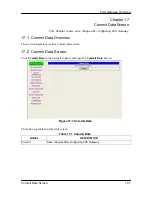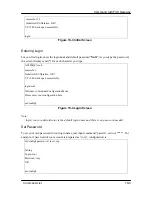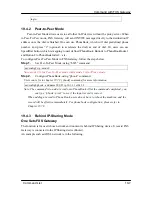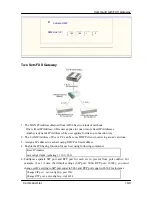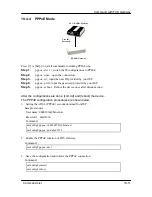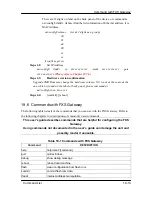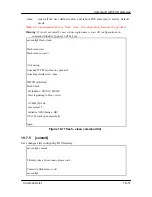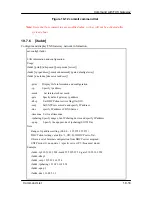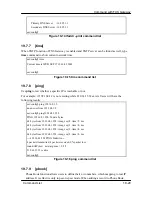
Command with FXS Gateway
command to save any configuration that you make, otherwise the FXS Gateway will return to its
default setting when it is restarted.
Do not turn off your FXS Gateway or remove the FXS Gateway
While saving your configuration.
19.4 Application modes
This Chapter will introduce the four application modes users often use.
Particularly the Proxy and Peer-to-Peer mode are the basic application mode. User would like to
set as advanced application mode, such as PPPoE Mode and Behind IP-Sharing mode, please
refer to the basic application mode for more information.
19.4.1 Proxy
mode
Proxy mode means that there will be an intermediate Proxy Server between FXS Gateway
and the remote entity. While operating at this mode, FXS Gateway will first register to the Proxy
Server located at the ISP side. For the following operation, it sends the INVITE message to the
Proxy Server once you initiate a session. Then the Proxy server will forward the INVITE
message to the right place. And the Response message from the remote entity will be forwarded
back to you via Proxy server.
Step 1.
If you have one or more accounts included user name and password, you need to
configure the accounts using “security” command. For detail, please refer to
Chapter 19.7.13 [security] command.
An example is demonstrated below:
usr/config$ security –line 1 –name 12345 –password 12345
Note: This is to set username (userid) as “12345”, password as “12345” into line1,
which means line1 can accept incoming calls after successfully registered to Proxy
server. If you have another account and set into line2 as shown below.
usr/config$ security –line 2 –name 54321 –password 54321
Note: This is to set username (userid) as “54321”, password as “54321” into line2. Then,
both lines can accept incoming calls after registration.
Step 2.
You must specify Proxy address obtained from your service provider. And the
Proxy address can be IPv4 address as well as DNS name. For detail, please refer
to Chapter 19.7.12 [sip] command.
Several important SIP parameters are listed below when setting proxy mode:
“–px”, ”–line1” and ”–line2”.
An example is demonstrated below:
usr/config$ sip –px 210.68.222.33 -line1 0506 –line2 0507
Note:
1. This is to set proxy address as “210.68.222.23”, line1 number as “0506”, line2
Command List
19-5








